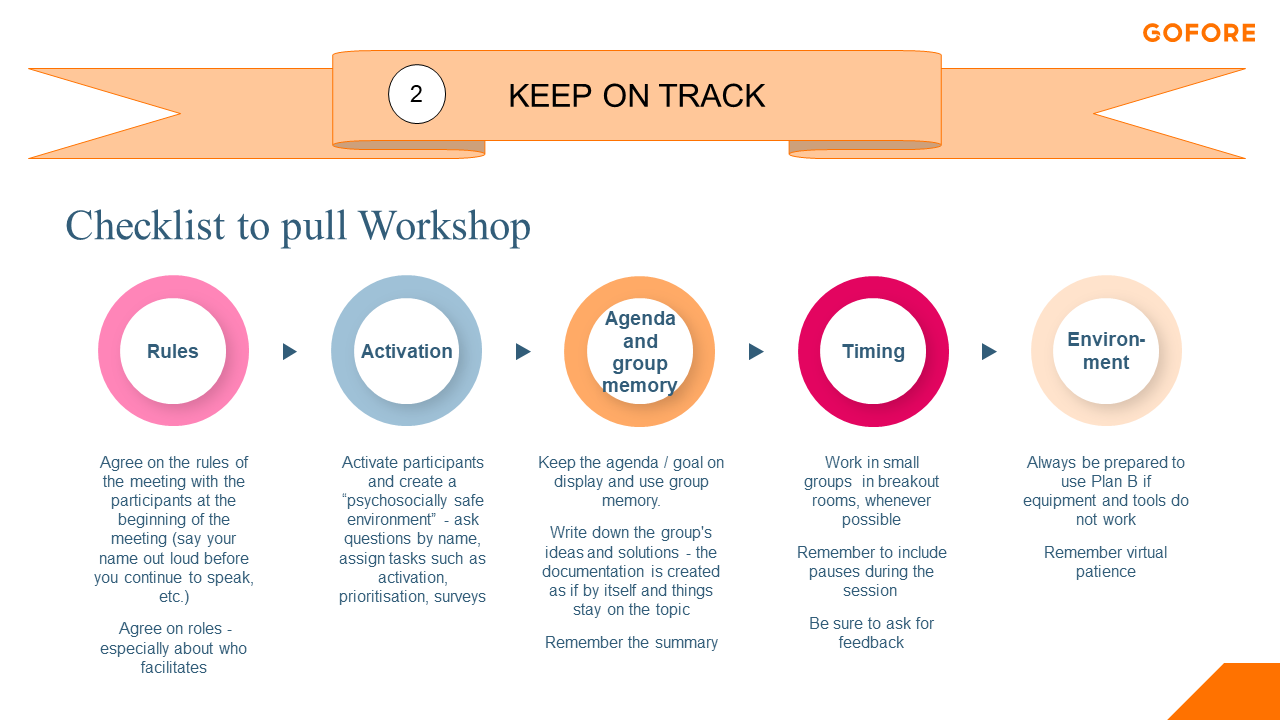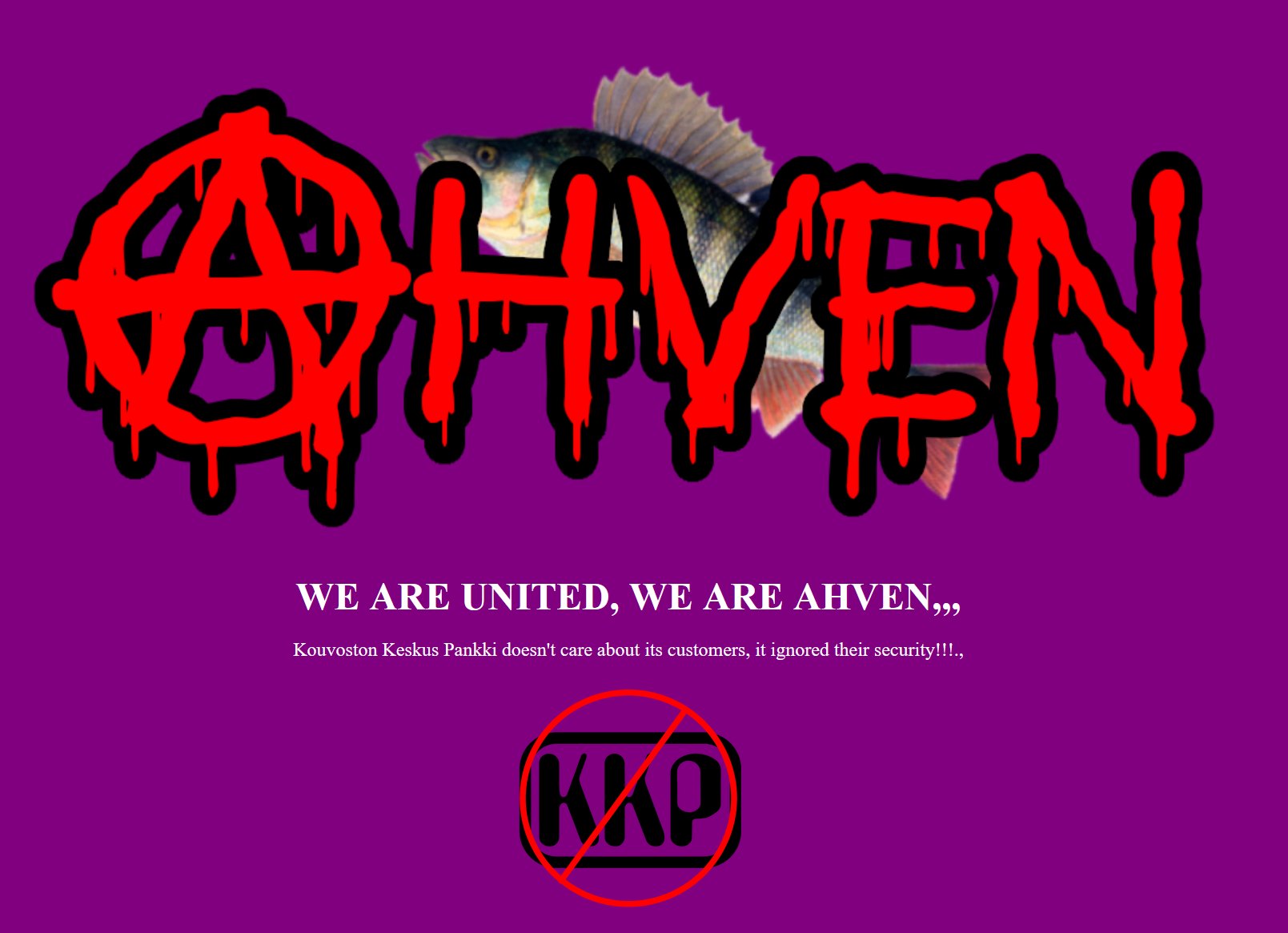During the workshop
In the first part of this blog series, Part 1 Before the workshop, we focused on things that should be done before the workshop. In this blog, we’ll advise you how to work during the workshop.
These blog posts are a combination of what we learned from virtual meetings facilitation and our own findings when doing online workshops. Try out these tips and find your own way of doing virtual and online workshops.
Physical settings
Master your own working environment – We found out that even if your workshop is virtual, facilitating it works best if you and your co-facilitator physically sit in the same room. You can comment more easily to each other while facilitating (muting the mic or using post-it notes). If you are remote, use instant messages with your co-facilitator.
During the workshop, use a headset for clear audio, participate from a peaceful environment, and use instant messages.
Test the sound and screen sharing with someone before the meeting starts.

At the start
Be an Early Bird – You can request participants to join five to ten minutes earlier to the conferencing to test their ability to hear, speak and see; you can incorporate this test time into the start of the agenda. Anyway be sure to test your own sound and screen sharing with someone trusted outside your organisation, before the meeting starts and participants join you.
You can also help participants with possible technical problems, ensuring everyone can see and hear you. It is probably useful to also check your email and phone, because some people might email or phone you if they don’t manage to get in.
Remember that tense participant don’t contribute – One significant factor to consider when planning virtual workshops, or workshops in general, is psychosocial safety. Workshop participants need to feel sufficiently safe and confident to open their mouths, to ask questions, to present alternative views, to challenge (constructively), and so on. You, as a facilitator, are responsible for creating psychological safety in your workshop- A good idea is to allow a few minutes for informal discussion around a light or fun topic during these five to ten minutes at the start. You can ask (in the slide you show) people to say their name and say Hi! to the others, and to give them something to do while waiting for others to join. For example, you can request them to “choose the draw tool (Zoom) to draw your face and write your name to the slide you show”.
Ensure your participants know the rules of the workshop – When participants are joining a preset workshop format, with a structure and a timetable, repeat the rules for the online behavior and clarify your and your co-facilitator’s role in workshop. We usually request the following:
- Mute your mic when you’re not speaking
- Always say your first name when you speak
- Participate 100% and respect all participants at all times
- Be patient
- If you must leave, announce this beforehand and tell when you’re going to be back.
If you have presentations, you can also ask participants to write their questions to the chat and inform that you will go through questions after the presentation.
Working together
Where does it all end? Begin with the end in mind – It’s very important that participant understand the purpose and objective of workshop: Why are we here? What we need to solve? If the objective of the workshop is unclear to all participants, they won’t won’t be committed. So this is your first task to solve – to clarify the objective and to get all participants committed to being active.
If you haven’t introduced the participants to the online co-working tool / board, do it now. We usually briefly review the most important tools they will use today in the workshop before going to the warm-up phase.
Warm-up’s mission is ice-breaking – You can request participants to write down expectations for the workshop in the chat. Or you can prepare a slide including pictures representing various moods or feelings and ask participants to choose one and tell something about their choice.
Timing matters – During the work consider sufficient timing for work assignments; not too short that your participants are not able to finish their assignment, and not too long that they start reading their email, etc. You can monitor the activity via the online board and lengthen/shorten the work time accordingly. Agree with your co-facilitator on how to modify the schedule on-the-fly and on how to communicate the need to speed up or to add extra time, while you are in separate groups.
TIP: A brief “bio-break” after the groupwork helps you have separate groups in their own conferencing sessions: people have time to exit their sub-meeting and join the main meeting. Display a presentation slide as screen share with the deadline for returning to the main meeting.
By sharing good decisions – After the main work, walk through the work assignment results with your participants. It’s important to share especially when there has been more than one group and board in the workshop. Walk through all groups and their individual boards. You can edit and refine the results, for example by combining duplicate post-it notes, during the joint going through session.
Use a “parking lot” for themes not directly connected to the assignment. Even when following a strict agenda, you often find yourself getting lost in detail discussion or being carried away. Thus, you can lose focus and go off track in your quest to reach your goal.
In the end
Keep participants engaged afterwards – Discuss the results together. You can have a small break during which you can formulate a summary of the workshop, what was done, and the results. You or your co-facilitator can make additions to the board, for example by writing down ideas and questions. Identify the small wins from your workshop. Realising the workshop outcomes and targets can keep participants energised and engaged afterwards, so make this a key part of your communication with them.
Make sure things happen after the workshop – Agree on the next steps if you can. You can also arrange this in a new virtual meeting. We’ll talk more about that in the next blog.
Fill expectations – Tell what happens next, how the results of the workshop will be used, and when and how the results from the workshops will be shared.
Get feedback while it’s fresh – Ask for feedback or impressions from the participants: if there are less than ten participants, you can have a comment round; if more than ten, ask them to write their feedback or just load an emoji into the chat.
Finally
Workshops can seem daunting and challenging if you haven’t had any or are a novice. Workshop skills, such as improvising around agendas or reading from people’s emotions, come with practice and with good planning.
In the next part of this blog series, Part 3 After the workshop, we focus things you should do after the workshop.



